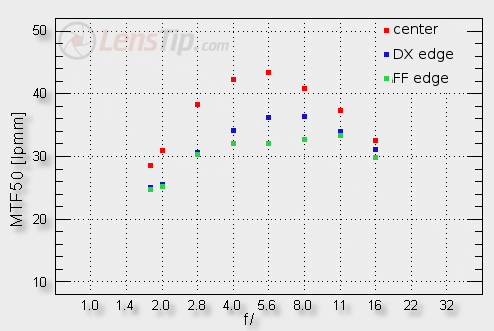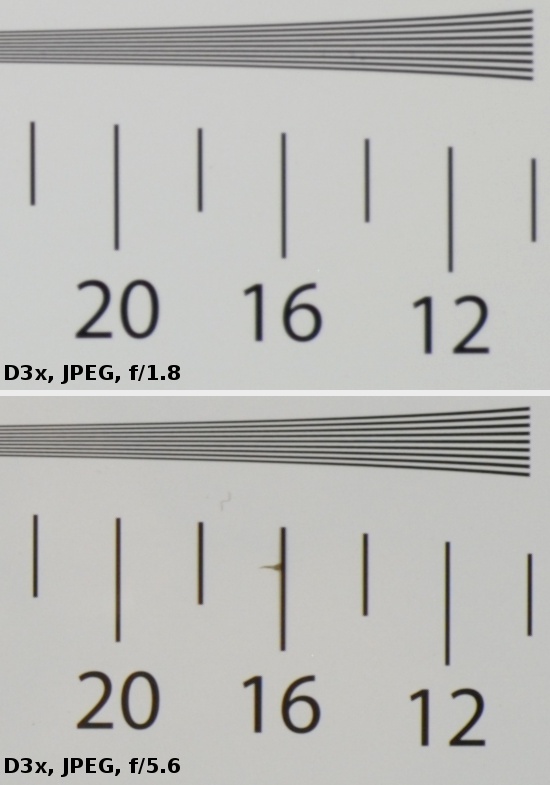Nikon Nikkor AF-S 28 mm f/1.8G
4. Image resolution
Let’s get down to facts and see how the Nikkor AF-S 28 mm f/1.8G fares in the frame centre, on the edge of the APS-C/DX sensor and full frame.

Please Support UsIf you enjoy our reviews and articles, and you want us to continue our work please, support our website by donating through PayPal. The funds are going to be used for paying our editorial team, renting servers, and equipping our testing studio; only that way we will be able to continue providing you interesting content for free. |
- - - - - - - - - - - - - - - - - - - - - - - - - - - - - - - - - - - - - - - - - - - - - - - -
The performance in the frame centre can be described only in superlatives. Although the lens can’t get to our official decency level at the maximum relative aperture it comes really close. By f/2.0 the MTF50 function value exceeds already the level of 30 lpmm so images there can be considered fully useful. On stopping down the resolution improves very quickly – by f/2.8 you get already 38 lpmm and by f/4.0 you see a bit over 42 lpmm. The peak of its possibilities the lens reaches by f/5.6, where the MTFs get to the value of 43.5 lpmm. These results are short of resolution records by about 2-3 lpmm. It is a pity; contemporary fixed-focus lenses like a 1.8/28 instrument are expected to break records and the Zeiss Distagon T* 28 mm f/2.0 ZF might be an example that it is possible. The Nikkor can’t perform as well because it doesn’t correct all optical aberrations as it should. In next chapters you will find out which aberrations we have in mind.
The performance on the edge of the frame is interesting. In quite wide area near the maximum relative aperture the results, presented on the edge of the smaller detector are comparable to those, observed on the edge of full frame. Then the achievements start looking different to look similar once again near f/11.
Overall the performance on the edge of the frame we like a bit less than that we observed in the centre. On the one hand already near f/2.8 you get a fully useful image; on the other hand the slower Zeiss still managed to fare better. It should be honestly admitted that the Nikkor is much better than the Canon 1.8/28 or the Sigma 1.8/28, in the frame centre and on the edge alike. The image quality follows here the price perfectly. The most expensive Ziess fares the best, the cheapest Canon and the Sigma are the worst. The tested Nikkor can be put right in the middle.
At the end of this chapter we traditionally present some photos of our resolution chart, taken in the JPEG format.
 |






